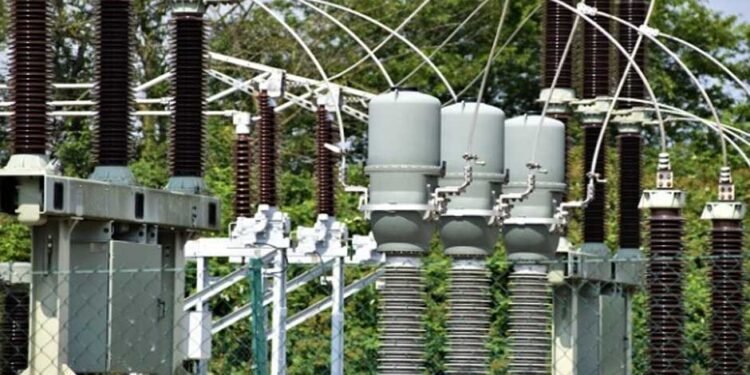Planning to upgrade your electrical or communication setup? One of the first things to figure out is whether you need low-voltage or high-voltage cabling. But this choice isn’t always straightforward. Many homeowners and business owners get confused by the technical terms, making it hard to know which fits their project. That’s why working with professional low voltage cabling contractors or high-voltage specialists can be a game-changer. They can help you navigate the details, ensuring you pick the right option based on your needs. Before jumping in, it’s worth understanding what makes these two types of cabling different. Choosing the right one makes your system safer and more efficient in the long run.
What is Low Voltage Cabling?
Low voltage cabling refers to electrical wiring and systems that operate on 50 volts or less. It’s widely used for a variety of applications, including telecommunication networks, audio-visual setups, and security systems. Because low voltage cabling carries less power, it is considered safer and poses less risk of fire or electrical hazards compared to high voltage cabling. The lower power requirements also mean that low-voltage systems can be installed with thinner, more flexible cables, making them easier to manage and integrate into existing structures.
Low voltage cabling is preferred for homes, offices, and commercial spaces that rely heavily on communication and data networks. For instance, data cabling for internet and phone lines and wiring for surveillance cameras and alarm systems all fall under low voltage cabling. Because these systems are often critical to daily operations, it’s essential to hire specialized low-voltage cabling contractors who understand the specific requirements and best practices for setting up these networks.
What is High Voltage Cabling?
On the other hand, high-voltage cabling is used for electrical systems that operate above 600 volts. These cables are built to handle heavy electrical loads and are typically found in industrial settings, power transmission lines, and large commercial buildings. The installation of high-voltage cables is a complex task that requires adherence to strict safety standards and protocols. High-voltage systems are designed to transmit large amounts of power over long distances, making them ideal for powering heavy equipment, large machinery, and electrical substations.
The materials used in high-voltage cabling also differ from those in low voltage cabling. These cables are insulated with heavy-duty materials to prevent electrical leaks and ensure safe operation. Given the complexity and risk involved in handling high-voltage cables, it’s essential to work with certified professionals who have experience in high-voltage installations. In many cases, high-voltage cabling requires specialized tools, testing equipment, and compliance with strict safety regulations.
Key Variations Between Low Voltage and High Voltage Cabling
The primary difference between low voltage and high-voltage cabling lies in the power they transmit and the applications they serve. Low voltage cabling is ideal for systems that require minimal power, such as lighting, communication networks, and entertainment systems. These cables are thinner, more flexible, and easier to install, making them perfect for residential and office settings.
High-voltage cabling is designed to carry large amounts of electrical power, making it suitable for industrial and commercial applications. The cables are thicker and heavily insulated, focusing on ensuring safety and reliability over long distances. Because high-voltage systems carry more power, they pose a greater risk if not handled correctly, making it crucial to follow strict safety standards and hire experienced professionals for installation and maintenance.
In terms of cost, high-voltage cabling is generally more expensive due to the materials used and the complexity of the installation process. On the other hand, low-voltage cabling is more affordable and flexible, making it a practical option for many home and office setups.
Installation Requirements and Safety Considerations
When installing low-voltage cabling, the process is relatively straightforward, but it still requires a knowledgeable approach to ensure optimal performance. Low voltage cables must be properly routed to avoid interference, and special attention should be given to ensuring the connections are secure and reliable. Because low-voltage systems often handle data and communication signals, any disruption can affect the system’s overall performance. This is why hiring professional low-voltage cabling contractors is recommended to get the job done correctly.
High voltage cabling, however, requires a much more rigorous approach. The installation must follow strict safety protocols to prevent electrical hazards. High voltage systems also require specialized tools and protective gear, making DIY installations dangerous and not advisable. Professionals must ensure the cables are properly insulated, securely anchored, and regularly maintained to avoid electrical accidents. Any mistake in high-voltage installations can have severe consequences, making it essential to work with certified experts.
Applications of Low Voltage and High Voltage Cabling
Low-voltage cabling is commonly used in residential and commercial settings for various applications, including:
Security systems: CCTV cameras, alarm systems, and access control.
Communication networks: Internet, phone lines, and intercom systems.
Entertainment setups: Home theater systems, audio-visual equipment, and lighting.
Low-voltage cabling offers flexibility and ease of installation in these applications, making it a popular choice for modern homes and offices.
High voltage cabling, on the other hand, is found in more demanding environments such as:
Power transmission: Used in substations and power grids to distribute electricity over long distances.
Industrial machinery: Supplies power to heavy machinery and equipment in factories.
Large commercial buildings: Powers central heating, ventilation, and air conditioning systems.
These applications require the power capacity and durability that high-voltage cables provide, making them the preferred choice for heavy-duty electrical systems.
Choosing the Right Cabling for Your Needs
For homeowners and businesses looking to set up communication networks, security systems, or lighting, low voltage cabling is typically the best choice. It’s cost-effective, easy to install, and safe to manage. For larger-scale projects that involve powering heavy equipment or distributing electricity over long distances, high-voltage cabling is the way to go. It offers the power capacity and durability needed for more demanding applications. If you’re still unsure, consulting with professional low-voltage cabling contractors can provide valuable insights and ensure that your project is set up for success.
Conclusion
Low-voltage and high-voltage cabling serve distinct purposes, and selecting the right one for your needs is crucial for both safety and functionality. While low voltage cabling is ideal for communication and entertainment systems, high-voltage cabling is best suited for industrial and large commercial applications. For any installation, whether low or high voltage, partnering with experienced contractors is the best way to ensure a safe and efficient setup.
If you plan to install a new cabling system, contact a reliable cabling contractor. They can guide you through the process, help choose the right type of cabling, and ensure that your system is installed safely and correctly for optimal performance.












